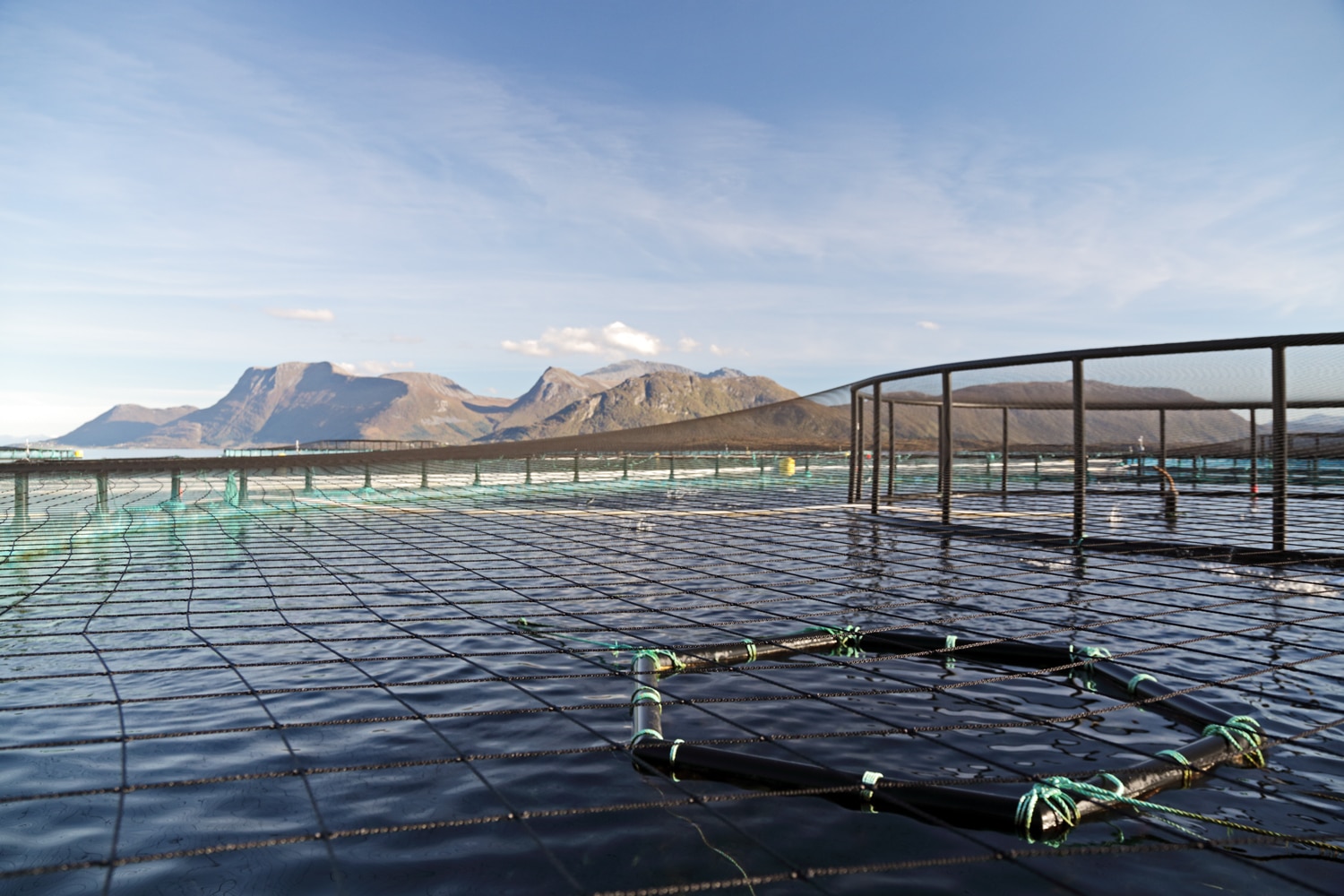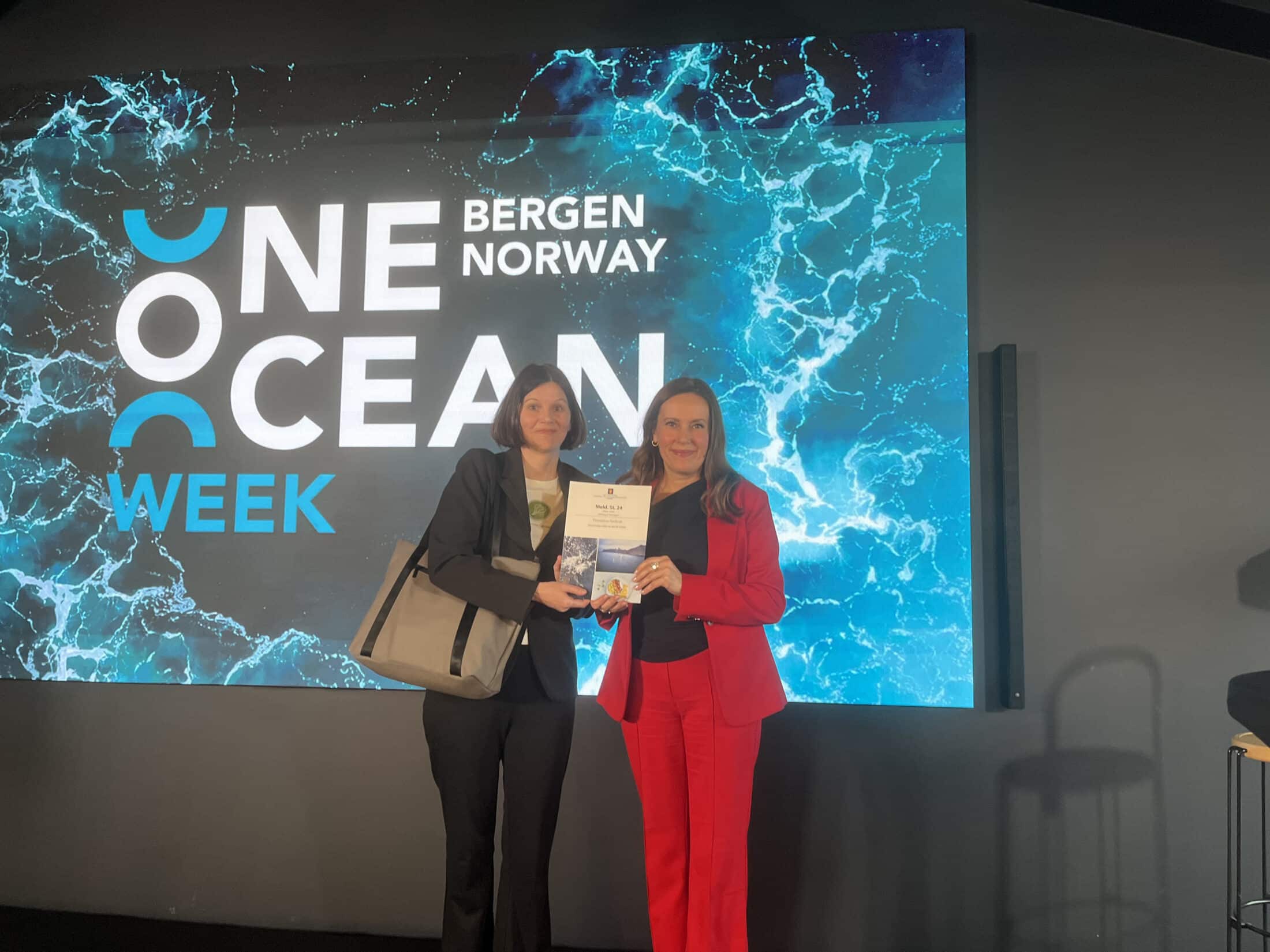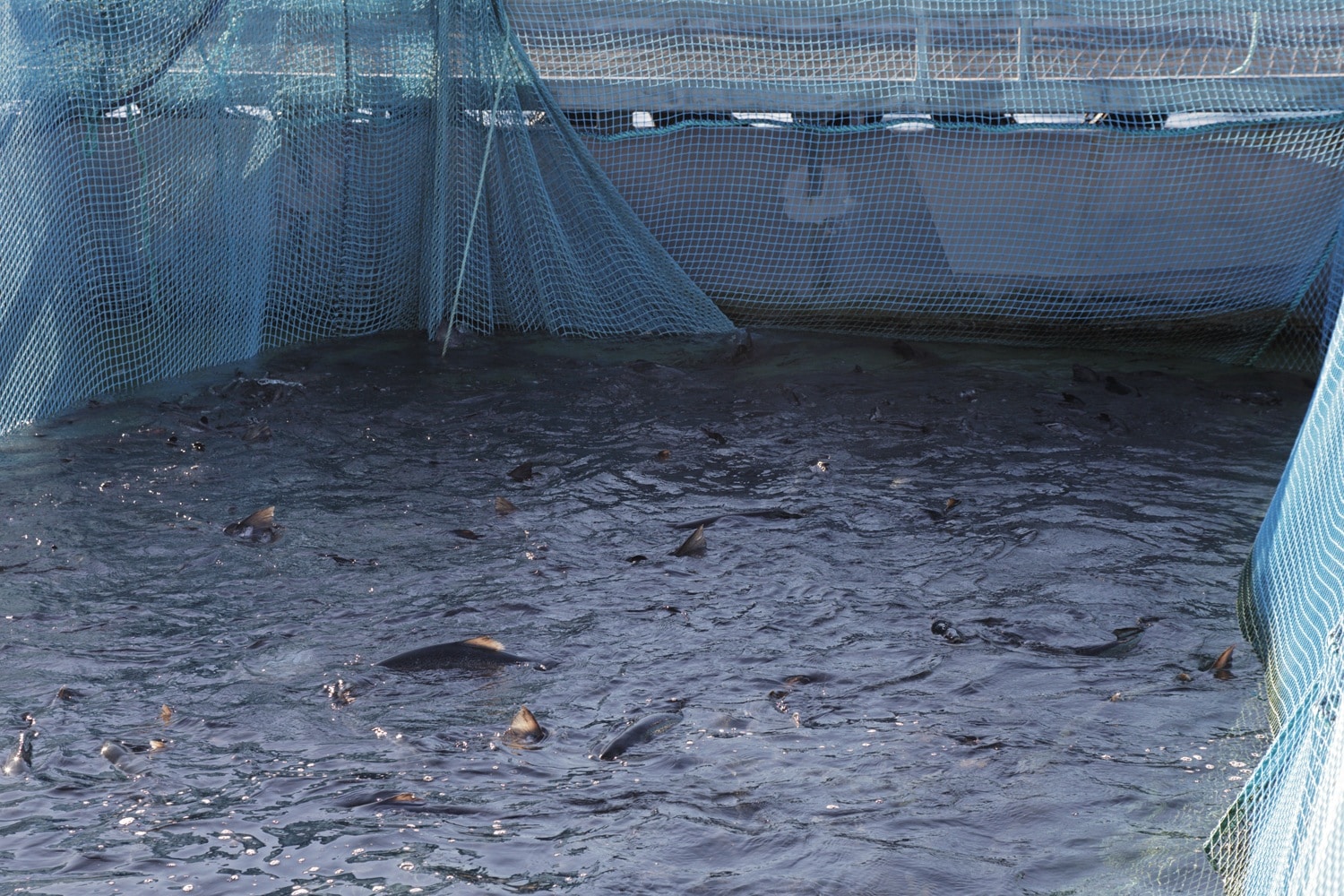Fish farming in Norway is big business. In terms of animal lives, more than 849 million salmon were kept by the industry in 2023, making salmon the number one farmed animal in Norway by far.

The Norwegian aquaculture industry has experienced rapid growth since its beginnings in the 1970s. In 2017, Norway produced over 52% of the world total production of Atlantic salmon. Today, fish farming in Norway is prolific along most of the country’s coastline, producing more than 1,5 million tonnes of fish per year, almost all of which is exported.
Fish farming in Norway – a major welfare problem
Mortality levels are high in Norwegian fish farms. In 2023, 37.7 million farmed salmon smolts died, along with 62.8 million salmon during the seawater phase. Altogether, 100.5 million farmed salmon died that year. The exact causes of such high mortality levels remain unclear. However, a large number of fish die following intense handling operations such as delousing procedures. Gill disease and winter ulcers were also a major cause of suffering and mortality.
A typical Norwegian salmon farm
A typical Norwegian salmon farming locality consists of six to ten circular sea cages. Each sea cage will hold up to 200.000 salmon in a net that is 20-50 meters deep and 50 meters in diameter. The maximum stocking density is 25 kg/m3 (10 kg/m3 if organic), giving each conventionally produced salmon approximately one bathtub of water each. The largest sites will hold more than 2 million salmon per generation.
Juveniles most numerous and most overlooked
The highest numbers of individuals are found in juvenile Atlantic salmon production. However, compared to the production of farmed salmon at sea, less attention has been given to mortalities reported from production of juvenile salmon in Norway. In a project looking into welfare in hatcheries, the Norwegian Animal Protection Alliance uncovered unnaturally high mortality. The findings suggest that welfare implementations in hatcheries may be an effective way of improving salmon welfare.
Read more about Important insight about the welfare of juvenile farmed salmon.
Welfare issues in the Norwegian fish farming industry
Breeding
Intensive breeding has led to salmon growing to full size twice as fast as they did in the 1970s. Deformities due to breeding and fast growth leads to a proportion of farmed salmon experiencing severely compromised health and welfare.
Disease
With many individuals at each locality and many localities close together, disease had been a major challenge for Norwegian aquaculture. Although vaccinations have helped, certain diseases such as pancreas disease (PD), cardiomyopathy syndrome (CMS) and heart and skeletal muscle inflammation (HSMI) are prevalent. Gill disease and winter ulcers are of particular concern. While disease can cause suffering and mortality by itself, stressful or harmful handling such as treatment for lice with hydrogen peroxide is known to cause mass mortality in diseased fish.
Parasites
Salmon lice are prevalent. The main cause for concern for the industry is the increasing pressure from environmentalists to reduce parasitic burden for wild salmon. However, the lice do act as disease vectors as well as create infection pathways through the salmon skin, and so are also a direct concern for the industry itself. A maximum of 0.5 mature female lice per fish on average are allowed as per regulations for fish farming in Norway. Handling during delousing treatments is a major cause of stress and suffering. Delousing using hot water (thermal delousing) is the most common method, and is known to be painful and cause panic.
Cleaner fish
Salmon lice have developed resistance to the most commonly used medicinal lice treatments. As a result, the aquaculture industry increasingly relies on cleaner fish to control salmon lice. Cleaner fish are hailed by the Norwegian fish farming industry as an environmentally friendly approach to delousing, and are used as part of a parasite control approach at many localities. While some have raised concerns regarding the high mortality (near 100%), cleaner fish welfare remains very poor, and they are generally used as a disposable tool in salmon production.
In 2022, 36,2 million cleaner fish were used in Norwegian fish farms.
Help the animals
Do you want to give the animals a better life?
Help the animals who need it the most
Stress, handling and transportation
All handling of salmon can cause increased stress levels. Handling occurs during transportation, sorting, vaccination and medical treatment (e.g. chemical treatment for salmon lice). Not being able to escape aggressive individuals or poor environmental conditions can also cause stress for farmed salmon. Long term stress can inhibit normal behaviour and normal physiological processes.
Slaughter
Norwegian legislation requires farmed fish to be stunned prior to slaughter. Previously, CO2 was used for stunning, however this method was banned in 2012 following pressure from the Norwegian Animal Protection Alliance. CO2 is believed to cause a feeling of suffocation in fish. Today, fish farming in Norway involves two methods for stunning: electric stunning and percussive stunning.
Potential improvements for fish farming in Norway
- Breeding: Breeding should focus on healthy fish, and welfare must be prioritised over productivity in breeding goals.
- Reduced stocking density: The high stocking densities for conventionally produced salmon cause stress. Lower stocking densities is a possible improvement, however too low densities can cause territoriality and aggression. Lower stocking densities would also reduce the number of available hosts for parasites and disease, thus alleviating these severe problems that the industry is facing today.
- Avoid cleaner fish: Cleaner fish are used as a tool, and experience notoriously low welfare.
- Onsite slaughter: A few processing vessels are in use in Norway. These are mobile slaughter boats with a high capacity, and include the same stunning methods as are in use at conventional fish slaughter facilities. Bringing the processing plant to the animals eliminates the highly stressful transportation stage. Processing vessels are also more economic and provide improved disease control.
- Avoid thermal treatments: Delousing treatments using hot water causes pain and panic and should not be used.
Read more about The Norwegian Animal Protection Alliance


